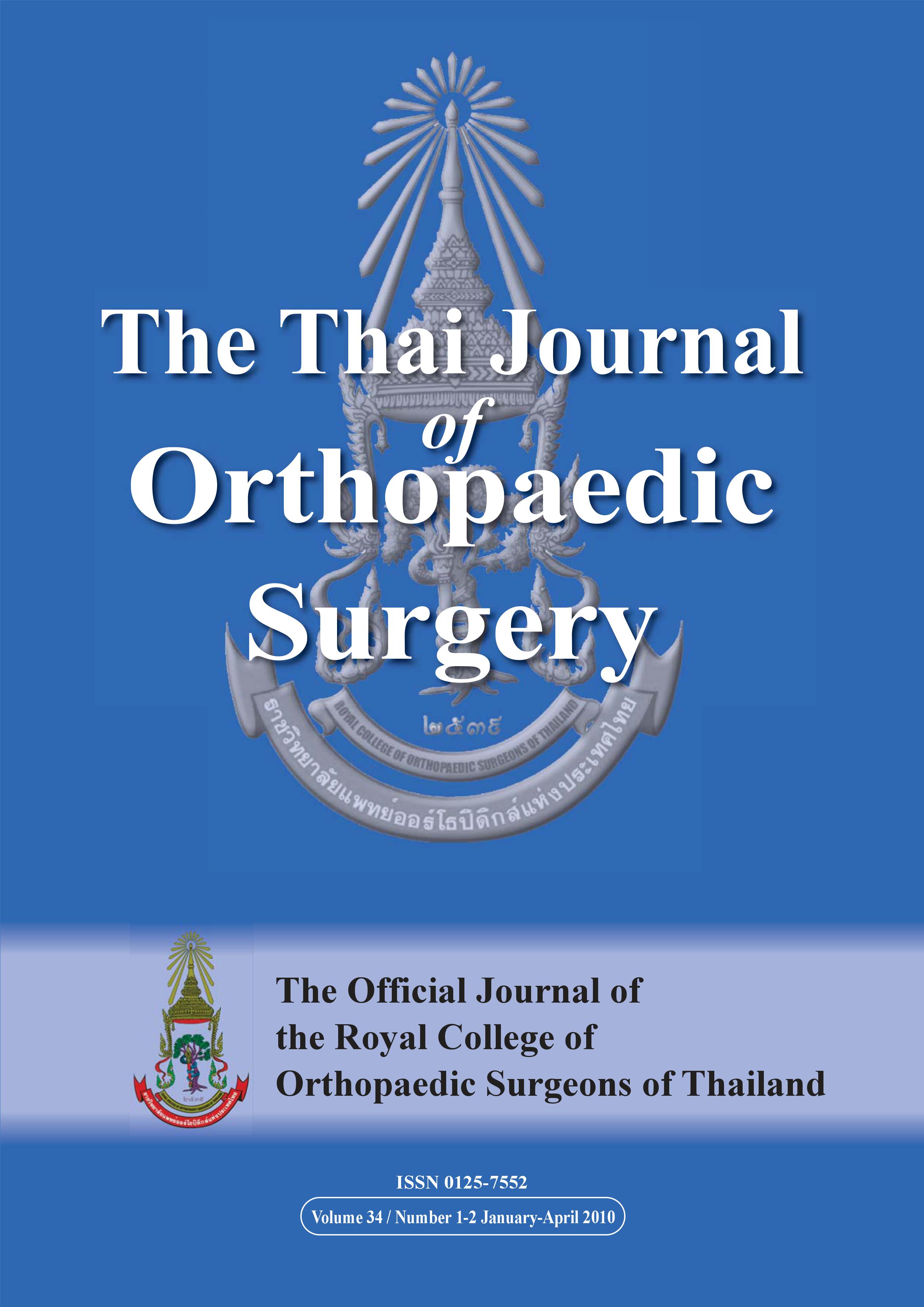Optimal Entry Point for Retrograde Femoral Nailing with Tibial SIGN Nail in Asians: a Cadaveric Study
Main Article Content
Abstract
Purpose: To identify the optimal entry point for retrograde femoral nailing with tibial SIGN nail.
Design: Descriptive analytic study
Methods: Twelve cadaveric thigh bones with attached knee joints underwent closed retrograde femoral nailing with tibial SIGN nail. After nail insertion, each femur was osteotomized at 10 cm proximal to the articular surface. Conventional radiographs were taken. Correlations between the entry point and fracture displacement were analyzed.
Results: A mid intercondylar sulcus and 9 mm anterior to the femoral PCL attachment resulted in the least displacement of the femoral fracture. This entry point allowed for minimal disruption of the patellofemoral joint during knee flexion.
Conclusion: When tibial SIGN nail is used in retrograde femoral nailing, a mid intercondylar sulcus and 9 mm anterior to the femoral PCL attachment provides the optimal balance of fracture reduction and sparing of the knee joint.
Article Details
References
2. Tornetta P 3rd, Tiburzi D. Antegrade or retro- grade reamed femoral nailing. A prospective, randomised trial. J Bone Joint Surg Br. 2000; 82(5): 652-4.
3. Rockwood CA, Green DP, Bucholz RW. Rock- wood and Green's fractures in adults. 6th ed. Philadelphia, Pa.: Lippincott Williams & Wil- kins. 2006: 1878-83.
4. Carmack DB, Moed BR, Kingston C, Zmurko M, Watson JT, Richardson M. Identification of the optimal intercondylar starting point for retrograde femoral nailing: an anatomic study. J Trauma. 2003; 55(4): 692-5.
5. Herscovici D Jr, Whiteman KW. Retrograde nailing of the femur using an intercondylar approach. Clin Orthop Relat Res. 1996(332): 98-104.
6. Krupp RJ, Malkani AL, Goodin RA, Voor MJ. Optimal entry point for retrograde femoral nailing. J Orthop Trauma. 2003; 17(2): 100-5.
7. Moed BR, Watson JT, Cramer KE, Karges DE, Teefey JS. Unreamed retrograde intramedullary nailing of fractures of the femoral shaft. J Orthop Trauma. 1998; 12(5): 334-42.
8. Morgan E, Ostrum RF, DiCicco J, McElroy J, Poka A. Effects of retrograde femoral intrame- dullary nailing on the patellofemoral articula- tion. J Orthop Trauma. 1999; 13(1): 13-6.
9. Ostrum RF, DiCicco J, Lakatos R, Poka A. Retrograde intramedullary nailing of femoral diaphyseal fractures. J Orthop Trauma. 1998; 12(7): 464-8.
10. Patterson BM, Routt ML Jr, Benirschke SK, Hansen ST Jr. Retrograde nailing of femoral shaft fractures. J Trauma. 1995; 38(1): 38-43.

